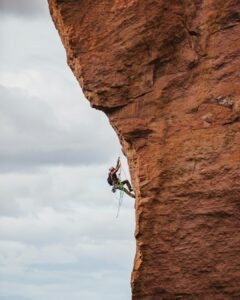Comprehensive Guide of Crocheting
Overview
Crocheting is a popular needlework hobby that involves creating fabric from yarn or thread using a hooked needle called a crochet hook. This craft allows individuals to produce a wide variety of items, including clothing, accessories, home decor, and toys. Crocheting is known for its versatility, as it can be done in various styles and techniques, such as single crochet, double crochet, and more intricate patterns like granny squares and lacework. Many people find crocheting to be a relaxing and meditative activity, providing a sense of accomplishment as they see their projects come to life. Additionally, crocheting fosters creativity, as crafters can experiment with different yarns, colors, and patterns to create unique pieces.
History
The origins of crocheting are somewhat unclear, but it is believed to have developed in the early 19th century, with some sources tracing its roots back to the 16th century. The term ‘crochet’ comes from the French word for ‘hook,’ and the craft likely evolved from earlier forms of needlework, such as knitting and lace-making. Crocheting gained popularity in Europe during the Victorian era, when it became a fashionable pastime among women. The introduction of new materials, such as synthetic yarns in the 20th century, further contributed to the growth of crocheting as a hobby. Today, crocheting continues to thrive, with a vibrant community of enthusiasts sharing patterns, techniques, and projects through online platforms and social media.
Popularity and Demographics
Crocheting has seen a resurgence in popularity in recent years, appealing to a diverse demographic of crafters. According to a survey conducted by the Craft Yarn Council, approximately 9.2 million Americans reported crocheting in 2020, with a significant portion of participants being women aged 25 to 54. The rise of social media platforms, particularly Instagram and Pinterest, has played a crucial role in promoting crocheting, as users share their creations and connect with fellow crafters. Additionally, the availability of online tutorials and video classes has made crocheting more accessible to beginners, encouraging people of all ages to take up the hobby. Crocheting is not only a creative outlet but also a way to foster community, as many local groups and clubs organize meetups and workshops for enthusiasts to share their passion.
Sponsored Hobbyists and Vendors
Become a Sponsor!
Affiliate Disclaimer: Throughout some sections below, Hobby Spotlight may suggest some tools, equipment or material using affiliate links. By purchasing any of those items, Hobby Spotlight may earn a small commission. This helps fund our website, content and services without directly charging our users.
Getting Started
Essential Crochet Tools:
Beginner
- Crochet Hook Set: A set of various sizes of crochet hooks for beginners.
- Yarn Ball: A basic yarn ball suitable for practicing crochet stitches.
- Yarn Needle: A large-eyed needle for weaving in ends and sewing pieces together.
- Stitch Markers: Markers to help keep track of stitches and patterns.
- Crochet Pattern Book: A book with simple patterns and instructions for beginners.
Intermediate
- Ergonomic Crochet Hooks: Comfortable crochet hooks designed for extended use.
- Specialty Yarn: Yarn with unique textures or fibers for more advanced projects.
- Blocking Mats: Foam mats used for blocking finished crochet projects.
- Crochet Stitch Dictionary: A reference book with a variety of crochet stitches and techniques.
- Project Bag: A bag to organize and carry crochet projects and supplies.
Basic Requirements and Initial Setup:
- Crochet Hook: A variety of crochet hooks in different sizes is essential, as the hook size affects the tension and appearance of the finished project.
- Yarn: Choose yarn based on the project requirements, considering fiber content, weight, and color. Common types include acrylic, cotton, and wool.
- Workspace: A comfortable and well-lit area to work on your projects is important. Having a dedicated space can help you stay organized and focused.
Fundamental Skills to Learn:
- Basic Stitches: Mastering foundational stitches like chain, single crochet, and double crochet is crucial for creating various patterns.
- Reading Patterns: Understanding crochet patterns and symbols is essential for following instructions and completing projects accurately.
- Gauge Swatching: Learning to create a gauge swatch ensures your finished item will be the correct size and fit.
- Finishing Techniques: Skills such as weaving in ends and blocking are important for achieving a polished look in your projects.
- Color Changes: Knowing how to change colors seamlessly can enhance the visual appeal of your crochet work.
Sub-Hobby/Common Activities:
- Amigurumi: The art of crocheting small, stuffed toys or figures, often characterized by their cute and whimsical designs.
- Garment Making: Creating wearable items such as sweaters, hats, and scarves, which requires knowledge of sizing and shaping.
- Home Decor: Crafting items like blankets, pillows, and wall hangings to enhance your living space.
- Charity Projects: Many crocheters participate in making items for charitable causes, such as blankets for shelters or hats for premature babies.
- Advanced Techniques: Exploring techniques like Tunisian crochet or lacework to expand your skills and creativity.
Terminology:
- Chain Stitch: The foundational stitch in crochet, used to start most projects.
- Single Crochet: A basic stitch that creates a tight, dense fabric.
- Double Crochet: A taller stitch that creates a more open fabric, often used in various patterns.
- Slip Stitch: A stitch used to join pieces or move the yarn without adding height.
- Yarn Over: The action of wrapping the yarn around the hook, essential for many stitches.
- Frogging: The process of unraveling crochet work to correct mistakes.
- Stitch Marker: A tool used to mark specific stitches or rows, helping to keep track of patterns.
- Blocking: The technique of shaping and setting the finished piece using moisture and pins.
- Gauge: The measurement of stitches per inch, crucial for ensuring the correct size of the finished item.
- WIP (Work In Progress): A term used to describe a project that is currently being worked on but is not yet finished.
Advanced Topics and Specializations
Advanced Crochet Tools and Equipment:
- Ergonomic Crochet Hook Set: A set of ergonomic crochet hooks designed for comfort and precision, often made from high-quality materials.
- Luxury Yarn Collection: A selection of premium yarns made from natural fibers like merino wool, alpaca, or silk, offering superior texture and durability.
- Crochet Stitch Guide Book: An extensive guide featuring advanced crochet techniques, patterns, and stitch variations for experienced crocheters.
- Blocking Mats and Pins: High-quality blocking mats and stainless steel pins used to shape and set crochet projects for a professional finish.
- Crochet Project Bag with Compartments: A spacious and organized project bag designed to hold multiple skeins of yarn, hooks, and patterns, ideal for advanced projects.
Advanced Projects and Achievements:
- Complex Garments: Creating intricate sweaters, cardigans, and shawls that showcase advanced stitch patterns and techniques.
- Amigurumi Creations: Designing and crafting adorable, stuffed crochet toys with unique characters and detailed features.
- Home Decor Items: Producing beautiful crochet items such as blankets, table runners, and wall hangings that enhance interior aesthetics.
Advanced Techniques and Methods:
- Colorwork Techniques: Mastering methods like tapestry crochet and intarsia to create vibrant, multi-colored designs.
- Filet Crochet: Utilizing a technique that combines solid and open stitches to create lace-like patterns and images.
- Crochet Lace Techniques: Implementing advanced lace stitches to produce delicate and intricate lacework for garments and accessories.
Specializations and Niche Areas:
- Eco-Friendly Crochet: Focusing on sustainable materials such as organic cotton and recycled yarns to create environmentally conscious projects.
- Wearable Art: Designing unique, artistic pieces that blend fashion with crochet, such as statement jewelry and accessories.
- Functional Crochet: Crafting practical items like bags, kitchen accessories, and home organization solutions that are both stylish and useful.
- Pet Accessories: Creating custom crochet items for pets, including toys, sweaters, and beds tailored to their needs.
- Charity Crochet: Engaging in community projects by making items for donation, such as blankets for shelters or hats for newborns.
Future Trends and Innovations:
- Increased use of sustainable and biodegradable yarns in crochet projects.
- Growing popularity of crochet as a therapeutic hobby, promoting mental well-being and mindfulness.
- Integration of technology in crochet, such as apps for pattern sharing and virtual crochet communities.
- Expansion of crochet workshops and classes, both in-person and online, to foster community and skill development.
- Emergence of crochet fashion shows and exhibitions showcasing innovative designs and techniques.
Technology Integrations:
- Pattern Apps: Mobile applications that provide access to a vast library of crochet patterns and tutorials.
- Online Communities: Social media platforms and forums where crocheters can share projects, tips, and support each other.
- 3D Crochet Design Software: Tools that allow users to visualize and plan their crochet projects in a digital format before starting.
- Video Tutorials: Streaming platforms offering step-by-step video guides for various crochet techniques and projects.
- Smart Yarn Dispensers: Devices that help manage yarn tension and prevent tangling during crochet projects.
Further Learning and Resources
Books:
- Crochet for Beginners by Sarah Shrimpton: An excellent introduction to crocheting, this book covers basic stitches, techniques, and simple projects to get started.
- The Art of Crochet by Jan Eaton: This book delves into advanced techniques and intricate patterns, perfect for those looking to elevate their crochet skills.
- Crochet Master Class by Jean Leinhauser and Rita Weiss: Featuring contributions from expert crocheters, this book covers sophisticated techniques and projects for the serious crocheter.
- Beyond the Square Crochet Motifs by Edie Eckman: This book explores complex motifs and designs, encouraging advanced crocheters to experiment and expand their creativity.
Websites:
- Ravelry, https://www.ravelry.com – A comprehensive online community for crocheters and knitters, featuring patterns, forums, and project tracking.
- Crochet Pattern Central, https://www.crochetpatterncentral.com – A vast collection of free crochet patterns organized by category, perfect for all skill levels.
- AllFreeCrochet, https://www.allfreecrochet.com – Offers a wide variety of free crochet patterns, tutorials, and tips for crocheters of all abilities.
- Crochet Crowd, https://thecrochetcrowd.com – A vibrant community with video tutorials, patterns, and a blog dedicated to crochet enthusiasts.
- Moogly, https://www.mooglyblog.com – Features free crochet patterns, tutorials, and resources, along with a focus on modern crochet techniques.
Courses:
- Crochet for Beginners by Craftsy, https://www.craftsy.com/class/crochet-for-beginners – A beginner-friendly course that covers the basics of crochet, including stitches and techniques.
- Advanced Crochet Techniques by Annie’s Craft Store, https://www.anniescatalog.com/crochet-classes – Focuses on advanced techniques such as lacework and garment construction for experienced crocheters.
- Udemy Crochet Courses, https://www.udemy.com/courses/search/?q=crochet – A variety of courses ranging from beginner to advanced levels, covering different styles and projects.
- Skillshare Crochet Classes, https://www.skillshare.com/browse/crochet – Offers project-based learning with classes taught by experienced crocheters, suitable for all skill levels.
- Creativebug Crochet Classes, https://www.creativebug.com/classseries/single/crochet – Provides a range of crochet classes, from beginner to advanced, with a focus on creative projects and techniques.
Content Creators and Community
Content Creators:
- Bella Coco (YouTube): A popular crochet channel offering easy-to-follow tutorials for beginners and advanced crocheters alike, focusing on a variety of projects from blankets to accessories.
- The Crochet Crowd (YouTube): Led by Mikey, this channel provides a wide range of crochet patterns, tips, and techniques, catering to all skill levels with engaging video content.
- Attic24 (Instagram): A vibrant crochet blog showcasing colorful projects, patterns, and inspiration, perfect for those looking to brighten their crochet creations.
- Hooked On You (YouTube): Focuses on modern crochet designs and techniques, providing tutorials that are both stylish and accessible for all crocheters.
- Jesse O’Keefe (Ravelry): A designer known for unique crochet patterns and a supportive community for sharing projects and ideas.
Online Forums and Social Media Groups:
- Reddit – /r/crochet: A community for crocheters to share projects, ask questions, and find inspiration.
- Facebook Crochet Groups: Various groups where members share patterns, tips, and finished projects, fostering a supportive environment.
- Crochet Addicts (Discord): An interactive platform for real-time discussions, sharing patterns, and troubleshooting crochet challenges.
- Instagram Hashtags (#crochet, #crocheting): Follow trending projects and connect with fellow crocheters through visual inspiration.
- Pinterest Boards: A treasure trove of crochet patterns, tutorials, and creative ideas curated by enthusiasts.
Local Clubs and Organizations:
- Community Crochet Groups: Many local libraries and community centers host crochet clubs where enthusiasts gather to share techniques and projects.
- Local Yarn Shops: Often offer classes and workshops for crocheters of all skill levels, providing a space to learn and connect.
- Crafting Guilds: Organizations that promote various crafts, including crochet, offering resources, competitions, and community events.
- Meetup Groups: Platforms like Meetup.com host local crochet gatherings for sharing patterns and socializing with fellow crafters.
- Charity Crochet Groups: Many communities have groups dedicated to crocheting items for charitable causes, fostering a sense of purpose and community.
Events, Meetups, and Conventions:
- Stitches Conventions: A series of events across the country celebrating knitting and crochet with classes, vendors, and community activities.
- Local Craft Fairs: Many towns host craft fairs where crocheters can showcase and sell their work, as well as connect with other crafters.
- Yarn Festivals: Events dedicated to yarn and fiber arts, featuring workshops, demonstrations, and opportunities to purchase unique materials.
- Workshops at Craft Expos: Learn new techniques and patterns from experienced crocheters at various crafting expos.
- Crochet Retreats: Organized getaways focused on crochet, providing a relaxing environment to learn, create, and connect with fellow enthusiasts.
Associated Hobbies
- Knitting: Often considered a close relative to crocheting, knitting involves using two needles to create fabric from yarn. Many crocheters also enjoy knitting, as both crafts share similar techniques and materials.
- Embroidery: This hobby involves decorating fabric using a needle and thread. Many crocheters incorporate embroidery into their projects, adding intricate designs and personal touches to their crocheted items.
- Sewing: Sewing can complement crocheting by allowing crafters to create garments or accessories that incorporate both techniques. Many crocheters enjoy sewing their own patterns or finishing edges of crocheted items.
- Quilting: Quilting involves stitching together layers of fabric to create a quilt. Crocheters may use their skills to create unique quilted items or to add crocheted borders to quilts for a personalized touch.
- Yarn Dyeing: Some crocheters take their hobby a step further by dyeing their own yarn. This allows for complete control over color and texture, resulting in unique and custom yarns for their projects.
- Crafting Patterns: Many crocheters enjoy designing their own patterns, which can be shared with others or sold. This creative outlet allows for personal expression and can lead to a community of fellow crafters.
- Craft Fairs and Markets: Participating in craft fairs allows crocheters to showcase and sell their work. This can be a rewarding experience, providing opportunities to connect with other crafters and customers.
- Online Communities: Many crocheters engage with online communities through social media or dedicated forums. These platforms provide a space for sharing tips, patterns, and finished projects, fostering a sense of camaraderie among enthusiasts.
Cost and Budgeting
Initial Investment and Ongoing Costs:
- Initial Investment: The cost to start crocheting can be quite affordable. A basic crochet kit, which includes a few hooks and a selection of yarn, can be purchased for around $20-$50. If you opt for higher-quality yarn or specialized hooks, the initial investment can range from $50 to $100.
- Ongoing Costs: The main ongoing costs include purchasing yarn, which can vary significantly in price depending on the type and quality. Basic acrylic yarn can cost as little as $3 per skein, while luxury fibers like alpaca or silk can range from $10 to $30 per skein. Additionally, you may need to replace hooks or buy patterns, which can also add to the overall cost.
Budget-Friendly Options:
- Yarn Stashes: Many crocheters have leftover yarn from previous projects. Consider using these remnants to create smaller items or practice new techniques without additional costs.
- Free Patterns: There are numerous websites and blogs that offer free crochet patterns, allowing you to explore various projects without spending money on patterns.
- Community Resources: Local libraries often have crochet books and resources available for free. Additionally, many community centers or groups offer free classes or workshops for beginners.
Where to Buy:
- Craft Stores: Stores like Michaels and Joann Fabrics offer a wide selection of yarn and crochet supplies, often with sales and discounts available.
- Online Retailers: Websites like Yarnspirations, LoveCrafts, and Amazon provide a vast selection of yarn and crochet tools, often at competitive prices, with the convenience of home delivery.
- Local Yarn Shops: These shops often carry unique and high-quality yarns, and the staff can provide personalized recommendations and advice for your projects.
Money Making
How to Turn the Hobby into a Profession or Side Hustle:
- Custom Crochet Items: Start a business creating custom crochet items such as blankets, hats, scarves, and toys. You can take orders from clients who want personalized designs or specific colors, allowing you to showcase your creativity while earning money.
- Online Crochet Store: Set up an online store on platforms like Etsy or Shopify to sell your crochet creations. This allows you to reach a wider audience and sell both finished products and crochet patterns, catering to fellow enthusiasts who want to create their own items.
- Crochet Classes and Workshops: Share your skills by offering crochet classes or workshops in your local community or online. You can teach beginners the basics or offer advanced techniques, charging a fee for your expertise and helping others develop their skills.
- Crochet Content Creator: Start a blog, YouTube channel, or social media account dedicated to crocheting. Share tutorials, tips, and project ideas, and monetize your content through sponsorships, affiliate marketing, or ad revenue. This can turn your passion into a profitable venture while building a community of fellow crocheters.
- Pattern Design and Sales: If you enjoy creating unique crochet patterns, consider designing and selling them online. You can create digital downloads of your patterns and sell them on your website or platforms like Ravelry, allowing other crocheters to purchase and use your designs.
Benefits and Enjoyment
Physical, Mental, and Social Benefits:
- Physical Activity: Crocheting involves repetitive hand movements that can improve dexterity and fine motor skills. It can also help strengthen hand muscles and improve coordination, making it a beneficial activity for maintaining hand health.
- Mental Relaxation: Engaging in crocheting can be a meditative experience, allowing individuals to focus on the rhythm of their stitches. This can reduce stress and anxiety, promote mindfulness, and enhance overall mental well-being.
- Social Connection: Crocheting can be a social activity, whether through local crafting groups, online communities, or crochet classes. Sharing projects, tips, and experiences fosters friendships and a sense of belonging among crafters.
Success Stories and Inspirational Examples:
- Yarn Bombing Movement: This global phenomenon started as a way to bring color and creativity to urban spaces. Artists and crafters use crocheting to create vibrant installations in public areas, inspiring communities and promoting the art of crochet.
- Attic24: A popular crochet blog run by Lucy of Attic24, she shares colorful patterns and tutorials that have inspired thousands of crafters worldwide. Her journey from a hobbyist to a successful blogger and author showcases the potential of crocheting as a fulfilling career.
- Craftivist Collective: This group combines crafting with activism, using crochet to raise awareness for social issues. Their projects, such as creating handmade banners and installations, demonstrate how crocheting can be a powerful tool for change and community engagement.
Ways to Enjoy and Grow in the Hobby:
- Explore New Techniques: Challenge yourself by learning different crochet techniques, such as amigurumi, lacework, or Tunisian crochet. This will expand your skills and keep the hobby fresh and exciting.
- Join a Crochet Group: Connecting with local or online crochet groups can provide support, inspiration, and opportunities to learn from others. Participating in group projects or challenges can enhance your enjoyment of crocheting.
- Give Back to the Community: Consider using your crochet skills to create items for charity, such as blankets for shelters or hats for newborns. This not only helps those in need but also adds a sense of purpose to your crafting.
Challenges and Solutions
Common Challenges Faced by Hobbyists:
- Learning Curve: Crocheting can be challenging for beginners due to the variety of stitches and techniques. Many new crocheters may feel overwhelmed by patterns and terminology, which can lead to frustration.
- Time Commitment: Completing a crocheting project can take a significant amount of time, especially for larger items like blankets or garments. Hobbyists may struggle to find the time to dedicate to their projects amidst busy schedules.
- Cost of Materials: While crocheting can be an affordable hobby, the cost of yarn, hooks, and other supplies can add up, particularly if you are drawn to high-quality materials or specialty yarns.
Tips for Overcoming These Challenges:
- Start Simple: Begin with basic patterns and stitches to build your confidence. As you become more comfortable, gradually tackle more complex projects to enhance your skills.
- Set Realistic Goals: Break larger projects into smaller, manageable tasks. Setting achievable goals can help you stay motivated and make progress without feeling overwhelmed.
- Shop Smart: Look for sales, discounts, or bulk purchasing options for yarn and supplies. Consider joining local crochet groups or online communities where members often share resources and tips for finding affordable materials.
Safety Considerations and Best Practices:
- Use ergonomic hooks to reduce strain on your hands and wrists, especially during long crocheting sessions.
- Maintain good posture while crocheting to prevent discomfort or injury. Consider using a comfortable chair and ensuring proper lighting to avoid eye strain.
- Keep your workspace organized to prevent accidents, such as tripping over yarn or misplacing tools.
- Be mindful of allergies, particularly if you are sensitive to certain yarn materials. Always check labels and consider hypoallergenic options if necessary.
- Practice good hygiene by regularly cleaning your crochet tools and storing yarn in a clean, dry place to prevent dust and pests.
Conclusion and Encouragement
Recap of Key Points:
- Crocheting is a versatile craft that allows you to create a wide range of items, from clothing and accessories to home decor and gifts.
- It requires minimal supplies, making it an affordable hobby to start; all you need is a crochet hook and yarn to begin your journey.
- Crocheting can be a relaxing and meditative activity, providing a sense of accomplishment as you see your projects come to life.
- There are countless patterns and techniques to explore, allowing for endless creativity and personal expression in your work.
- Crocheting can also foster community, with many local groups and online forums where enthusiasts share tips, patterns, and support each other.
Encouragement to Start and Enjoy the Hobby:
- Crocheting is an accessible hobby for all ages and skill levels. Beginners can start with simple patterns and gradually progress to more complex projects as they gain confidence.
- This hobby is perfect for unwinding after a long day. The repetitive motions of crocheting can be soothing, helping to reduce stress and promote mindfulness.
- Joining a crocheting group or class can enhance your experience, providing opportunities to meet new people, share ideas, and learn from others in a supportive environment.
Final Tips and Motivational Thoughts:
- Don’t be afraid to make mistakes; they are part of the learning process. Each project is an opportunity to improve your skills and discover new techniques.
- Set small, achievable goals for your projects to maintain motivation and celebrate your progress, whether it’s finishing a scarf or mastering a new stitch.
- Share your creations with friends and family, or consider donating items to local charities. Spreading joy through your crocheted items can be incredibly rewarding.

















